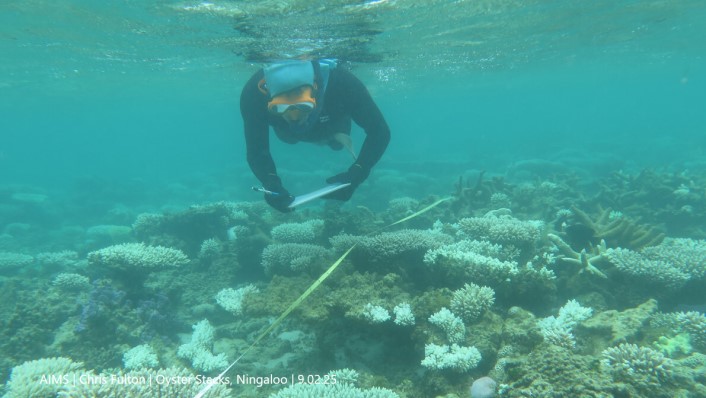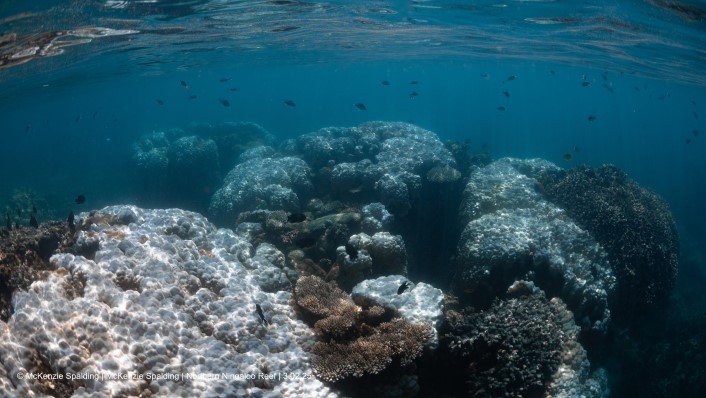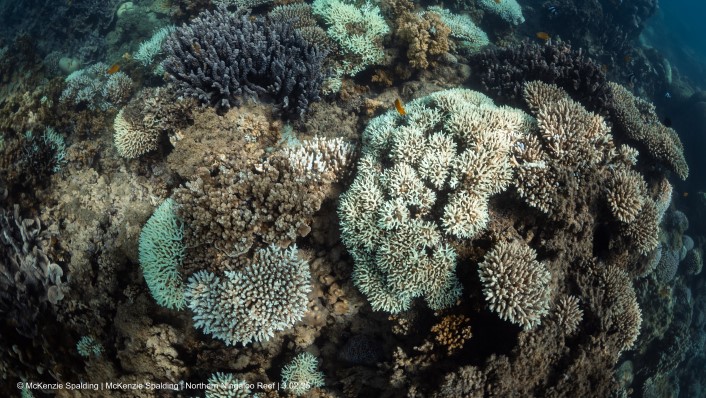by James Gilmour , Karen Miller
Observations from scientists, civil society organisations and communities in the Pilbara and Kimberley regions this month have confirmed a marine heatwave and major coral bleaching is affecting Western Australian reefs. This bleaching is of particular concern because of its timing and scale.
It has come before Western Australian reefs usually experience annual peak heat stress in March/April, and the bleaching spans thousands of kilometres from Ashmore Reef in the far north to Ningaloo Reef, an iconic World Heritage reef system off the North West Cape near Exmouth.
While we won't know the full impact of the bleaching for some months, the phenomenon serves as yet another reminder of how climate change is affecting the world around us, and the risks this poses to coral reefs globally.

WA reefs are among the heathiest, but not immune to global pressures
While there are not as many individual reefs off Australia's west coast as the east coast, Western Australia's coral reefs are as extensive geographically and as diverse as those found in the Great Barrier Reef.
Like the Great Barrier Reef, they are also well managed systems with a range of protections in place via state and federal marine parks.
Their remoteness means they escape many of the local pressures affecting the Great Barrier Reef, such as nutrient runoff and crown-of-thorns starfish, and in recent years have suffered less frequent bleaching events while demonstrating their ability to recover from even severe heat stress.
For example, the remote Scott Reefs off the northwest shelf had been hit by severe bleaching in 1998 and 2016 . A survey by AIMS researchers in 2024 showed that coral cover was beginning to bounce back. A similar level of recovery was evident following the mass bleaching event there in 1998.
Coral reefs need time to recover, around 10 to 15 years between disturbance events. But with ongoing increases in ocean temperatures, despite some excellent management practices, we know that more significant and widespread impacts are coming.

Collaborative, pragmatic approach
Over the past three decades the Australian Institute of Marine Science, the Department of Biodiversity, Conservation and Attractions and collaborators with other management agencies (Parks Australia, Indigenous Sea Rangers) and other research organisations (CSIRO, Curtin, The University of Western Australia, the Bureau of Meteorology), have been studying sea surface temperatures and WA reefs and sharing information.

Around 10 years ago, AIMS scientists convened the Western Australian Coral Bleaching Group which brings together many of the above organisations to discuss coral bleaching risks to WA reefs and to share information through the summer.
The group tracks heat stress, documents coral bleaching and coordinates monitoring efforts, while providing updates in its monthly newsletter . This is a vital effort when dealing with reefs hundreds and thousands of kilometres away from each other in some of the most difficult to reach areas of the state.
The group has been instrumental in bringing a range of stakeholders together to share information, make important connections and coordinate scientific efforts to understand more about marine heatwaves and coral bleaching in Western Australian waters. The importance of this group during this bleaching is already being made apparent.






